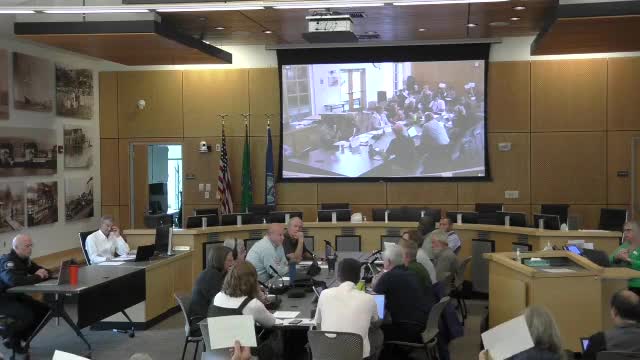City Council Faces Backlash Over Controversial Housing Density Proposal
August 26, 2024 | Mukilteo, Snohomish County, Washington
This article was created by AI summarizing key points discussed. AI makes mistakes, so for full details and context, please refer to the video of the full meeting. Please report any errors so we can fix them. Report an error »

In a recent government meeting, discussions centered around proposed residential density in a local development project, with significant input from both commissioners and residents. The proposal initially suggested a cap of 180 residential units, which was met with skepticism from several commissioners who argued for a lower limit, citing community feedback and existing neighborhood densities.
One commissioner highlighted that the density of 180 units closely matched that of Villa Rosa, which has a density of approximately 6.05 units per acre. However, they noted that many residents expressed a preference for a maximum of 120 units, prompting a reevaluation of the proposal. The commissioner emphasized the importance of aligning the new development with the existing character of nearby neighborhoods, such as Westridge and Waterton, which feature significantly fewer homes per acre.
Further analysis revealed that the proposed density might not be feasible given the size of the land and the need for open spaces and infrastructure. The discussion included a call for clarity on the concept of net density, which accounts for non-buildable land, suggesting that the actual number of units could be much lower than proposed if these factors were considered.
As the meeting progressed, commissioners expressed a consensus leaning towards a cap of 130 units, reflecting a desire to prioritize resident input and maintain the integrity of the surrounding area. The sentiment was clear: while the landowner's proposal was acknowledged, the commissioners were inclined to prioritize community concerns over development ambitions.
The meeting concluded with a call for further discussion and analysis before any final decisions are made, underscoring the ongoing dialogue between developers, city officials, and residents regarding the future of local housing developments.
One commissioner highlighted that the density of 180 units closely matched that of Villa Rosa, which has a density of approximately 6.05 units per acre. However, they noted that many residents expressed a preference for a maximum of 120 units, prompting a reevaluation of the proposal. The commissioner emphasized the importance of aligning the new development with the existing character of nearby neighborhoods, such as Westridge and Waterton, which feature significantly fewer homes per acre.
Further analysis revealed that the proposed density might not be feasible given the size of the land and the need for open spaces and infrastructure. The discussion included a call for clarity on the concept of net density, which accounts for non-buildable land, suggesting that the actual number of units could be much lower than proposed if these factors were considered.
As the meeting progressed, commissioners expressed a consensus leaning towards a cap of 130 units, reflecting a desire to prioritize resident input and maintain the integrity of the surrounding area. The sentiment was clear: while the landowner's proposal was acknowledged, the commissioners were inclined to prioritize community concerns over development ambitions.
The meeting concluded with a call for further discussion and analysis before any final decisions are made, underscoring the ongoing dialogue between developers, city officials, and residents regarding the future of local housing developments.
View full meeting
This article is based on a recent meeting—watch the full video and explore the complete transcript for deeper insights into the discussion.
View full meeting
